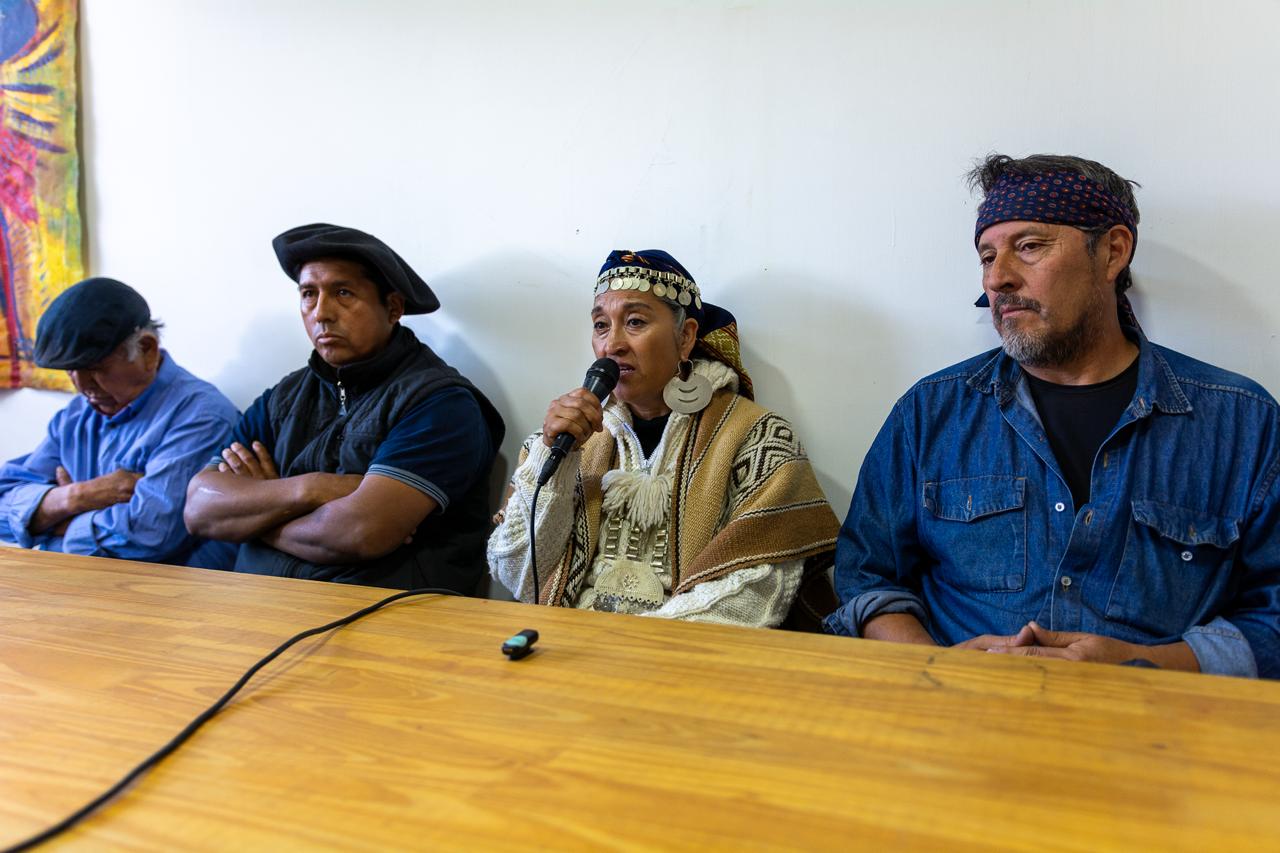At first, a song about the Mississippi Delta belted out on the moonlit shore of Zihuatanejo Bay, Mexico, seemed out of place. But the bluesy tune performed by U.S. musicians at this year’s Zihuatanejo International Guitar Festival struck a chord in the Mexican town. These days, many locals know the blues very well.
Wandering along Zihuatanejo’s small waterfront, harpist Jose Luis Ramirez lamented the absence of foreign tourists to serenade. Wearing a resigned look on his face, jewelry seller Margarito Batalla sat alone at his jewelry stand. And silver salesman Rolando Pineda Fernandez expressed the sentiments of many in the Pacific Coast resort. "We were expecting more people, but they didn’t come," Pineda shrugged. "Who knows what happened?"
In 2008, Zihuatanejo and other Mexican tourist destinations are suffering a downturn in international tourism. The reasons are multiple: U.S. recession, high fuel costs, air route cancellations, new U.S. passport requirements, narco-violence, and environmental contamination.
In Mexico tourism rakes in about $83 billion annually and helps support 2.4 million jobs, according to the federal Secretariat of Tourism (Sectur, as it’s referred to in Mexico). Foreign travelers account for nearly $13 billion of the tourist revenue, so fewer foreign travelers translates into economic pain. Tourism generates more money than the maquiladora export industry or remittances sent home by U.S.-based migrants.
"When there is a crisis like the one we are going through now, we see the weakness and vulnerability of the Mexican economy," said Zihuatanejo environmentalist and political analyst Silvestre Pacheco. "What happens in the United States has an immediate repercussion on our economy."
In the southern state of Guerrero, which includes the important tourist destinations of Ixtapa-Zihuatanejo, Acapulco, and Taxco, international tourism dropped 55% from 2000 to 2007, according to Acapulco’s El Sur daily, citing the National Tourist Confederation.
Statistics from the State Secretariat of Tourism Promotion cited in the local media reported the flow of foreign tourists dropped from 515,771 during the first five months of 2007 to 401,753 for the same period this year.
According to Pacheco, tourist-dependent localities are in a jam. The economic planners who launched resorts like Ixtapa-Zihuatanejo in the 1970s expected investments to detonate local economies and benefit other sectors including agriculture, he said, but more than 30 years later the model is stuck on tourism.
"Agriculture has almost disappeared in this zone," Pacheco said. "The communities that were previously self-sufficient became dependent on the cities, and this problem is still not resolved."
Even in Guerrero, governed by the center-left PRD party, which billed itself as an alternative to the long-dominant PRI, development plans still center on expanding tourism, just as in the PRI years.
Despite the clouds on the horizon, Sectur is upbeat about the tourism industry. Earlier this year, the federal agency announced that international tourism actually increased nationwide, with tourist spending up more than 7% up during the first three months of 2008 in comparison to the same period for 2007. But the numbers are deceptive. Prices for basic tourist-purchased goods, especially food, have soared during the last year. Also, comparing the first quarter of 2008 with the same three months of 2007 is misleading because the two-week Holy Week and Easter holiday season—an intense period of tourism in any year—fell within the first quarter of 2008 but took place in the second quarter of 2007.
Although the Mexican tourism industry has been hurt by external circumstances for some time, negative trends have become especially pronounced in 2008. Worse yet, many say that a growing percentage of the foreign tourists who do stumble ashore are penny-pinchers.
Tatiana Meneses, a young university graduate who helps run a popular family restaurant in Puerto Vallarta, was surprised by the "evolution" of tourist spending. "I have never before had the experience, for example, of seeing tourists count coins … one, two, three, four," Meneses said. Lately, the restaurateur accepts more orders for the cheapest plates on the menu and "two glasses of water" that are not bottled. High overhead costs and tight-wadded customers are putting the squeeze on the local restaurant business, Meneses affirmed. "A lot of restaurants are closing because they can’t pay the rents anymore," she added.
U.S. airlines, hit by the same rises in fuel costs that are gouging into tourists’ vacation budgets, have raised fares and cancelled routes. In recent months, air routes like the direct Albuquerque-Puerto Vallarta flight have been canned, and ticket prices have doubled in some cases.
Public Security Concerns
Rising violence and crime also hinder Mexico’s tourism business. Precise numbers of tourists scared away are hard to measure, but Marcelina Celestino Martinez, a beach attire merchant in Acapulco, contended that outbreaks of narco-violence in the bustling port city during 2006 and 2007 have left their scars. The planting of victims’ heads in public locations likely spooked potential visitors, Martinez speculated.
"When (narco-violence) wasn’t a problem, tourism came here, foreigners came," she said, "but now it goes to other places—to Ixtapa-Zihuatanejo, Puerto Vallarta, Puerto Escondido."
As in other Mexican cities, more than a few foreign and national tourists have had unpleasant encounters with police in Acapulco. Reports of city cops shaking down tourists show up in the local press regularly.
In Canada, a country that traditionally sends an important number of snowbirds to Acapulco and other destinations, calls surfaced within the past year to boycott Mexico because of the suspected murder of a young Canadian man in Acapulco and the controversial arrest of a Canadian woman in Jalisco.
If grenade-tossing narcos and pocket-picking public servants weren’t enough, Acapulco’s chaotic traffic flow makes a simple stroll down the street a life-daring challenge for pedestrians; elderly Canadian and U.S. tourists have been run down in the street.
Bad publicity in Canada comes at a particularly inconvenient moment for Mexico. Enjoying a rise in the purchasing-power of their dollar, more Canadians should be flocking to Mexico.
Five hours from Acapulco by highway, Mexico City is increasingly promoted as a safe, must-see stop for foreigners. City officials claim the notorious street crime that ravaged their city during the 1990s has significantly diminished. But the Mexican capital remains potentially dangerous turf. In a three-day period during a visit last March, this writer was harassed by city police, robbed of $250 from a presumably secure room, and bilked for another $120 from the ubiquitous one-armed bandits called ATMs.
Nowhere in Mexico is the public security crisis having a greater impact on tourism than in the northern border region with the United States, an area bloodied by wars between competing drug trafficking gangs. According to a report by the Reforma news agency, Mexican hotel and other tourist industry sources estimated the border region could have lost 250,000 tourists, 6.3 million day visitors, and upwards of $100 million in 2007.
"Tourists get scared by the military operations, by the federal police at checkpoints, and by the news they see," said Carlos Cruz, spokesman for the Mexican Travel Agency Association.
In Ciudad Juarez across from El Paso, Texas, the public security crisis has deepened in 2008. Since the beginning of the year, the narco war has virtually wiped out the border city’s tourist industry, which was already ailing from post 9-11 border crossing hassles. Shootings inside bars and on main streets have driven away all but the most intrepid visitors. Some businesses report sales are down by as much as 70%, and have started laying off employees. Travelers approaching Ciudad Juarez from the south are searched at an army checkpoint before entering a city where rifle-toting federal police and soldiers are readily visible. Still, the narco-violence continues.
A 2008 report by the World Economic Forum rated Mexico No. 122 in security for global tourist destinations. Near the bottom of the list, Mexico fell slightly behind China, Kenya, the United States, Colombia, and India.
Government and Popular Response
Though it maintains a positive public relations spin on tourism prospects, the Mexican government realizes serious problems exist with the long-standing reliance on U.S. tourism. Adjusting to the circumstances, tourism promoters are pitching Mexico in other nations in a campaign to recruit tourists from non-traditional places including Russia, China, and South America. It remains to be seen, however, if soaring fuel costs will put a damper on the viability of long-distance markets.
Mexican officials of all political stripes seemingly seek to transform every last patch of soil into one big tourist theme park even given the bad signs for the industry. Places once considered off the beaten tourist path, such as Morelia, Michoacan, now project a tourist veneer. To lure the tourist dollar or yen or ruble or peso, industry planners are carving out new travel circuits dedicated to virtually every vacation concept imaginable. Magic Pueblos, Route of the Gods, the Heart of Mexico, and the Green Coast are a few of the emerging, colorful-sounding itineraries.
"These are some of the measures that Sectur considers will place us in a better position of competiveness in the principal markets of the world," said Sectur Secretary Rodolfo Elizondo.
To boost tourism, federal, state, and local governments are spending public money generously. In Mexico City, for example, visitors are now offered free rides on tour buses. In Aguascalientes, site of the National San Marcos Fair, the state government spent $30 million last year to upgrade facilities for a once-traditional Mexican fair that is approaching the intensity of New Orleans’ Mardi Gras or Brazil’s Carnaval.
Tourist destinations are digging in their heels and trying to play off their strengths. Existing events like U.S. spring break in Acapulco or the Zihuatanejo guitar fest acquire extra importance. In an otherwise drab high season, the guitar festival temporarily pushed up hotel occupancy rates a few points, according to Guillermo Catalan, Zihuatanejo’s municipal director of tourism.
Others are experimenting with individual solutions. At the small souvenir shop Maribel Cortez Ayala helps her sister run in Zihuatanejo, prospective customers used to see more indigenous arts and crafts from Oaxaca on sale, Cortez said. Nowadays, they’re more likely to see Cortez family-made items manufactured from Coca Cola cans, potato chip bags, and magazine paper. "It’s cheaper to make these," she said. "We don’t need to buy many materials. We don’t have to invest a lot."
In the short-term, Mexican tourist communities will count more than ever on spending by their own national tourists this year. Two remaining periods of the year, the current summer vacation and the Christmas-New Year’s celebrations, could well prove critical for the immediate economic survival of many people. Although most Mexican tourists do not spend as much money as foreigners, they do provide vital income to people like Acapulco resident Marcelina Celestino Martinez. "We get by a little from what we earn during those days," she added. "The vacations come and go, then there are no sales, and we live a bit on that money."
Mexican tourism officials are publicly optimistic, but media dispatches about the first days of the 2008 summer vacation season don’t augur well for the industry. Multiple sources report tourism down in the important destinations of Los Cabos, Loreto, Puerto Vallarta, Ixtapa-Zihuatanejo, Acapulco, Huatulco, Veracruz, and Cancun.



